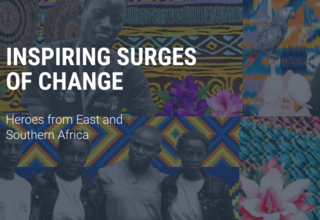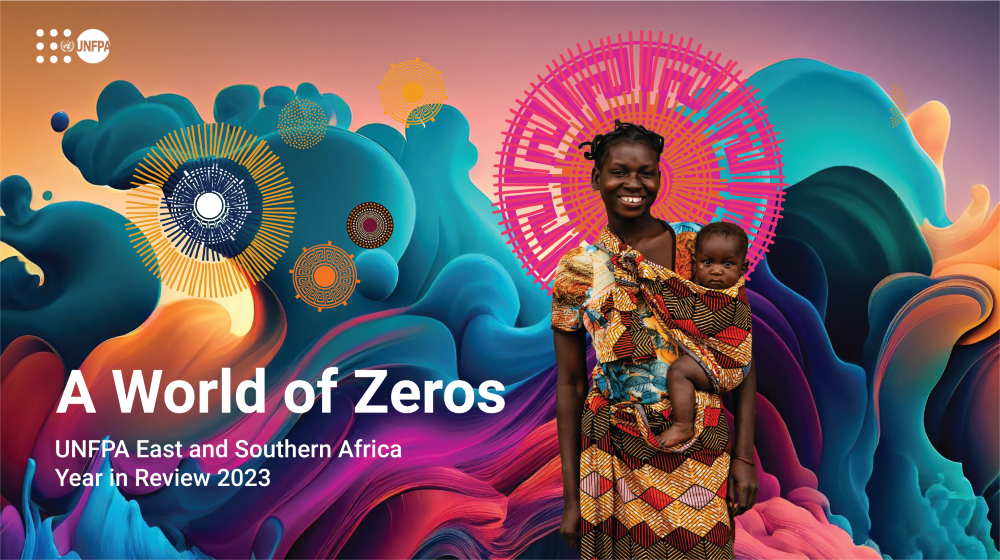Since AIDS emerged as a crisis in the 1980s, an unprecedented global response has made HIV prevention and treatment services available in almost every country in the world. Yet millions of people remain vulnerable to infection, especially in sub-Saharan Africa, which accounts for more than 70 per cent of new infections.
AIDS remains the leading cause of death among women of reproductive age and young adolescents. Stigma and discrimination continue to impede the realization of people’s rights, including access to essential information and services to prevent and treat HIV. Ending the AIDS epidemic requires long-term investments. Sexual and reproductive health and rights, indeed all human rights, are essential for realizing this vision. And given their higher risk of HIV infection, youth and key populations require focused support.
Context in East and Southern Africa
East and Southern Africa, which accounts for less than 8 per cent of the world’s population, remains the epicentre of HIV, with 20.7 million people living with HIV. This number represents 55 per cent of the number of people living with HIV in the world. Fifteen of the top 28 countries in the world with HIV infections are in the region. Of the 15 countries, eight—Botswana, Eswatini, Lesotho, Mozambique, Namibia, South Africa, Zambia, and Zimbabwe—have the highest prevalence rate in the world, ranging from 11 per cent to over 26 per cent among adults.
Overall, new infections in the ESA region fell by 43 per cent and AIDS-related deaths by 50 per cent from 2010 to 2020. This is, by far, the greatest progress in the world, with the global average decline in new infections being 31 per cent and decline in mortality being 47 per cent. Inequalities, however, still exist within and between countries in their HIV response.
Some of the most affected populations include women, especially adolescent girls and young women; key popula- tions; and clients of female sex workers. Women comprised three in five new HIV infections among adults in the region in 2020, while females between 15 to 24 years old are 2.6 times more likely to acquire HIV than their male peers.
Key populations are also more significantly affected. For instance, HIV prevalence among sex workers in Lesotho is esti- mated to be over 70 per cent compared to 26 per cent of the adult population. Similarly, HIV among men who have sex with men is as high as 27 per cent in South Africa. Clients of sex workers are also among vulnerable groups.
UNFPA’s response
Promoting human rights, reducing inequalities
UNFPA works with partners to increase access to HIV-related services and sexual and reproductive health services for young people, key populations, and women and girls, including those living with HIV. We also support the empowerment of these populations to claim their human rights, access the services they need, and lead healthy and fulfilling lives.
UNFPA also promotes the participation of community-led organizations, key populations and people living with HIV in all aspects of HIV and sexual and reproductive health policy and programming. UNFPA also supports municipalities in addressing micro-epidemics among key populations.
Linking HIV and sexual and reproductive health
In the absence of a cure, prevention is crucial to ending AIDS. This means the world must intensify HIV-prevention measures that have been shown to work. UNFPA focuses on reducing HIV transmission and comprehensively addressing the sexual and reproductive health and rights of key populations, women and girls and young people. Because the majority of HIV infections are sexually transmitted, reducing this mode of transmission is crucial. Working with partners, UNFPA is scaling up age-appropriate and culturally sensitive comprehensive sexuality education.
UNFPA is also increasing access to male and female condoms, which remain the only effective barrier prevention method providing triple protection against HIV, other sexually transmitted infections and unintended pregnancy.
Preventing sexual transmission of HIV
UNFPA also supports the empowerment of women and girls by helping prevent HIV infections among women and by ensuring that women living with HIV have access to rights-based sexual and reproductive health services. And by fighting to eliminate gender-based violence, child marriage and discrimination, UNFPA helps to reduce the vulnerability of women and girls to HIV. The specific needs of women and girls are also factored into UNFPA's humanitarian assistance.
UNFPA also supports the empowerment of young people to protect themselves from HIV, in particular by addressing their sexual and reproductive health needs. And UNFPA strengthens the availability and use of strategic data on young people and HIV, and works closely with youth organizations and networks.
And UNFPA strengthens procurement and supply chain management systems to ensure that condoms are available where people need them. UNFPA also increases awareness of and demand for condoms through the CONDOMIZE! Campaign.




